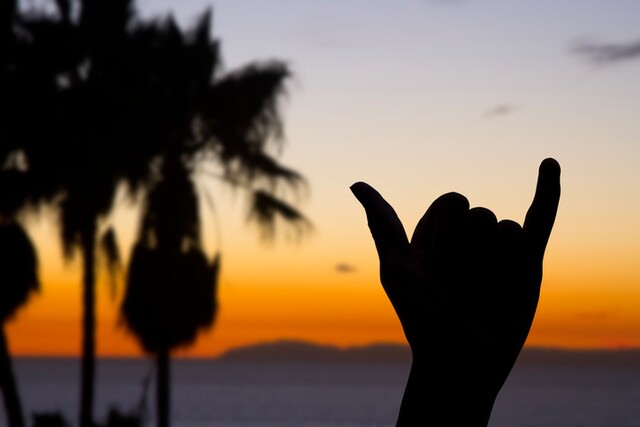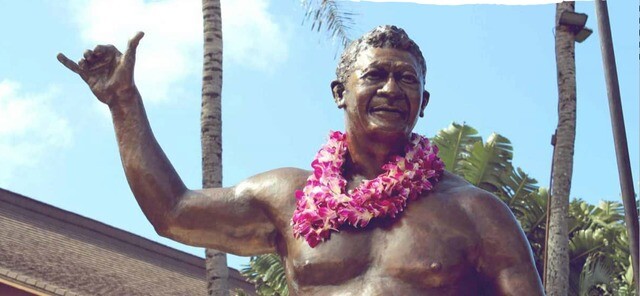Editor's note: This article originally ran on LDSLiving in 2019.
The shaka, a friendly hand gesture commonly used by surfers and BYU fans alike, didn't start out as a sign meant for either group.
The gesture, made by extending the thumb and pinky and loosely curling the middle three fingers into the palm, is thought to be invented by a Latter-day Saint.
A recent Facebook post shared by Maui 24/7 shares that the shaka's origins likely originated from Latter-day Saint and Laie, Hawaii, native Hamana Kalili.
According to the post, Kalili lost the three middle fingers on his right hand while he was working at the Kahuku Sugar Mill on Oahu in the early 1900s. Stories say that when he was assigned to work on the railroad that transported sugar cane, he would raise his right hand, with only his pinky and thumb, to let the train conductor know the railroad was clear.
Another version of the shakas origins goes that Kalili would use this gesture to shoo away mischievous children trying to catch a free ride on the train. According to an article by the Huffington Post, the children then began mimicking the gesture and using it for their own purposes.
However it was used, the shaka was strongly associated with Kalili. According to a Honolulu Star-Bulletin story from March 31, 2002, members always knew when Kalili was directing the choir in his ward.
"Even though his back was to the congregation, worshippers recognized him when he raised his hands to direct the choir because of his missing fingers," the Maui 24/7 Facebook post shares.
And at hukilaus, or feasts, Kalili would dress as King Kamehameha and welcome island visitors with the gesture, according to an article by BYU Magazine.
From there, the shaka's popularity grew among surfers and eventually became a gesture used by people around the world.
Today, the shaka has a list of meanings including "hang loose" and "all clear." But BYU fans know the shaka as something else.
Resembling a "Y," the gesture is also used as a way to represent support for BYU.
Though the shaka began as a gesture used by one man, its legacy has now stretched beyond its original meaning to become an iconic symbol for many.

▶ You may also like: Dwayne ‘The Rock’ Johnson celebrates his heritage at the Polynesian Cultural Center


